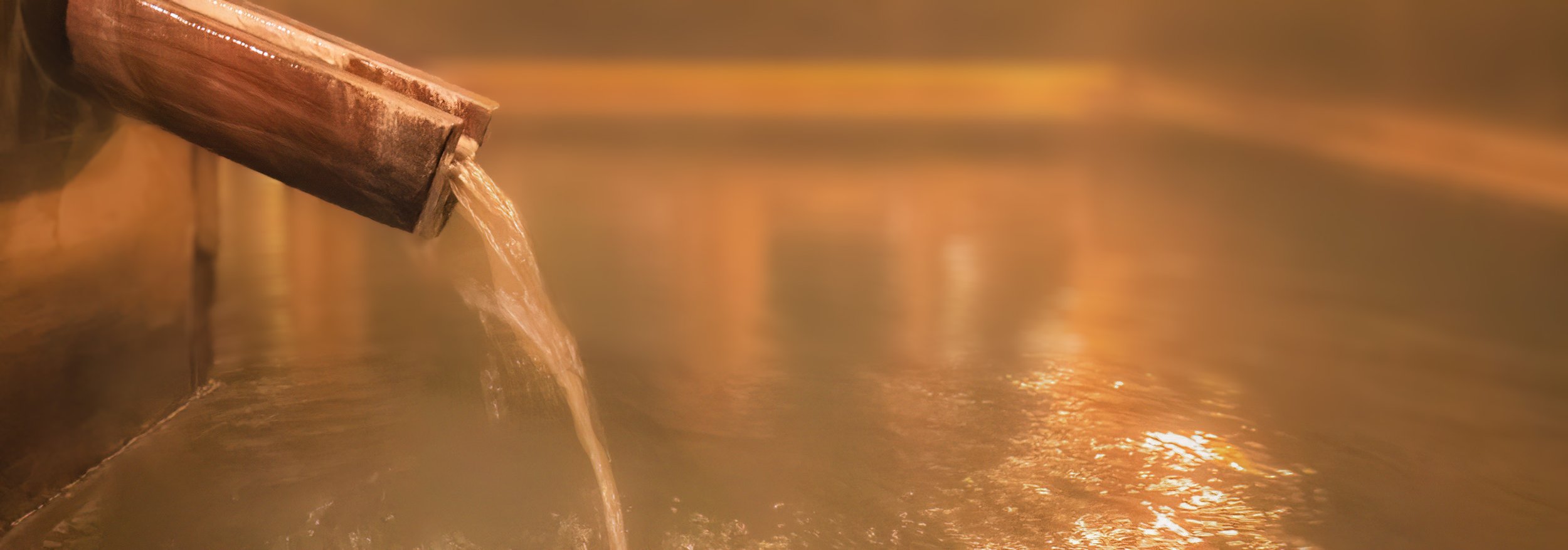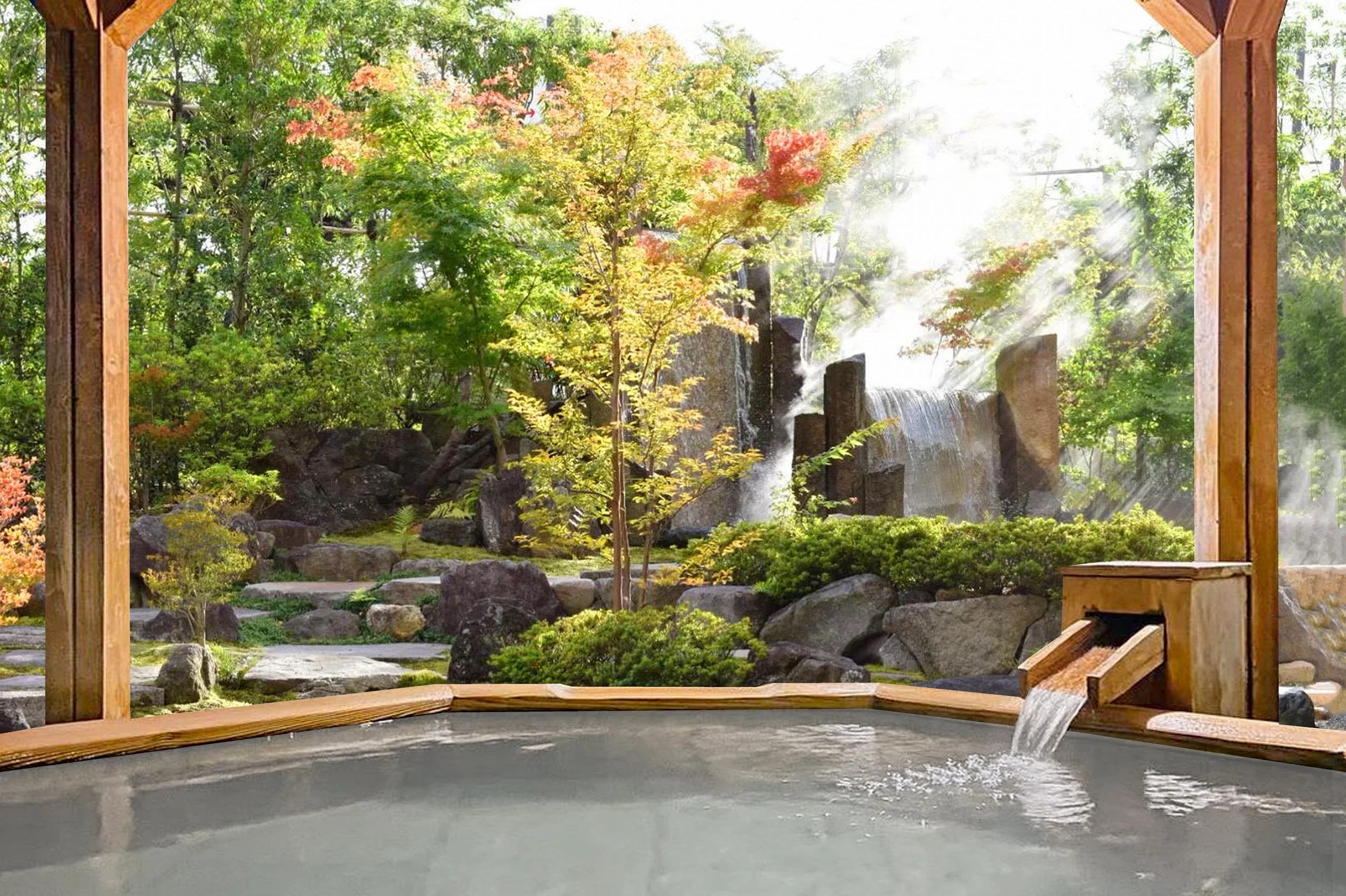Enjoy an Onsen on Your Next Trip to Japan
by Laura Studarus
How to take part in Japan's most relaxing tradition.
You’ve probably heard it from every website, guidebook, and friend who has visited Japan. Onsens are a great way to experience Japanese culture! Onsens are so relaxing! You’ve got to try an onsen while you’re in Japan!
All these statements are true. However, it’s worth noting that onsens are more than just a culturally specific spa. (Although, like their western counterparts, they are an excellent place to unwind.) In addition to a luxurious act of self-care (with entrance fees that usually range between 400-1500 yen), many visitors also see visiting onsens as an opportunity to connect with nature and bond with friends.
Anyone can visit an onsen. However, because these are places that are so steeped in Japanese culture, they come with their own traditions and codes of conduct. The good news—it’s nothing you can’t quickly learn before your visit. Read on to find out how to make the most of your trip to the onsen.
Please note: While researching bathing areas, you might also see the word sento. This refers to a man-made spa facility, which is a very different category of bathhouse. These can also be a great experience, delivering a same level of relaxation without the added health benefits. Try them both—comparing and contrasting is always encouraged.
First, a brief history
Onsen translates to hot spring. Given that Japan is a highly geothermic country with over 200 active volcanos, there are plenty of hot water sources to choose from. However, to be called an onsen, the spring needs to be naturally headed to at least 25 degrees Celsius, and have a high mineral content, which can include sulphur, sodium, iron and magnesium. According to the Nippon Onsen Research Association, only 3,000 locations meet the official qualifications
It’s not completely clear where the Japanese tradition of soaking in onsens first originated. The earliest mention of the practice was in The Nihon Shoki (日本書紀), first published in 720 BCE. Meanwhile, the oldest still working onsen is Arima Onsen, located in the Hyogo Prefecture. Its 1000-year-old golden springs are still used today to cure back pain, and muscle and join aches.
While the origins are still murky, it’s worth noting that Japan is uniquely primed for appreciating the art of relaxing in hot water. Shintoism, the most wildly practiced religion in Japan, teaches the divinity of nature. Meanwhile Buddhism (the second most practiced religion in the country), teaches that bathing in hot water is a shortcut to disease prevention and good fortune.
Given that, why not take the plunge?
How to enjoy an onsen
To answer what’s possibly most popular question: yes, taking on onsen will mean getting completely naked. (Nope, bathing suits of any kind aren’t allowed.) But don’t worry—no one is impressed or insulted by the appearance of a wing, breast, or thigh. There’s even a saying in Japanese “Hadaka no tsukiai,’ or naked companionship. Soaking in an onsen is a time leave your inhibitions behind, and find utter relaxation. (Which also explains why there’s no phones, cameras, or electronic devices allowed. See, don’t you feel more relaxed already?)
To protect the water and your fellow bathers, it’s important to start your onsen experience as clean as possible. So, before you take a dip, stop by a shower station, tie up your hair to keep it from getting wet, and scrub yourself from shoulders to feet. There’s also some evidence to suggest that rinsing with warm water will help protect your body from temperature shock before entering the main pool—so be sure to embrace all the benefits of your shower before the main event.
Once you enter the pool, find a comfortable place to sit or stand, and enjoy this rare moment of peace. Just remember, it’s not an endurance race. Most people stay in the water for about 15-20 minutes before rinsing off and repeating the cycle. So, keep an eye on the way you feel, and take regular breaks if you start to feel lightheaded or dizzy.
You’ll known that your onsen was successful if you’ve got exactly zero desire to do anything else afterwards. Lean into it, and include some time into your schedule for post-soak relaxation. Since community is built into the onsen concept, many locations have restaurants or snack bars to encourage people to congregate. Grab some water. (You’re probably dehydrated!) Also worth considering is a traditional snack like a onsen egg (tamago), cooked in the hot waters to create a soft, silky texture.
Great, how do I build the practice into my vacation?
First: some bad news. Japanese culture associates tattoos with gangster activity. Which means if you have any kind of body ink—no matter how small or cute—your options will be limited to renting a private soak area, or visiting tattoo-friendly bath houses. (However, it’s worth noting that Tokyo has a fairly deep bench of options.)
Sometimes finding an onsen can be as easy as booking a hotel. Called “Onsen Ryokan,” these are traditional Inns that offer both soaks and overnight lodging. While these also exist in metropolitan cities (where many luxury hotels offer in-house onsens), it’s worth embracing the full effects of the onsen by escaping city life and visiting an onsen village. Here’s a few of our favorites:
- Interested in visiting the famous hot spring monkeys at Jigokudani Monkey Park? Book a night or two at the nearby Yamanouchi/ Shibu Onsen. Renting a room in the area gives you a key to open each of the village’s nine traditional bath houses, each which claims to cure a specific ailment. Luck is granted to anyone who completes the entire circuit.
- Located two hours outside of Tokyo, Minakami is home to a number of hot springs, including Takaragawa Onsen, Hoshi Onsen, Sarugakyo Onsen, Tanigawa Onsen and Yubiso. During the fall, it’s an ideal place to watch the leaves turn while having a soak. And during the winter its access to local nearby mountains makes having an onsen the ultimate après-ski.
- The island of Hokkido is one of the most geothermic places in Japan, meaning you’ll have an abundance of onsen options. The Noboribetsu hot springs are considered one of the top soaking locations in the country. Take an onsen after visiting Jigokudani (Hell Valley), which offers up the unique experience of hiking through steaming mountains.
- Another good reason to get out of Tokyo for the night is Kusatsu, an onsen spring resort located three hours outside the city that claims it can cure anything but lovesickness. In all, there are a dozen smaller bathhouses and three large public baths, all with water so hot that kimono-clad workers are seen stirring the pools three times a day rather than dilute the natural minerals by adding cold water.
- Located in the Gunma prefecture, Sekizenkan is what many consider to be the area’s oldest hot spring inn. Designed in 1930, the large, sunken pools and arched windows of the onsen are inspired by Roman bathhouses. However, the exterior buildings are pure Japanese. If the red bridge and imposing layered walls look familiar, it’s because they served as one of the inspirations for Miyazaki’s 2001 animated masterpiece, Spirited Away.
Happy soaking!





